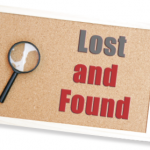
Fotovika / shutterstock.com
It was Christmas Eve, 1996. The pain had become excruciating—it had to be for Kerby to opt to go to the hospital on Christmas Eve because Kerby’s pain tolerance was high. At that point, he had been living with what had ultimately been diagnosed as psoriatic arthritis for about 30 years. That Christmas Eve, the pain was so intense he needed some relief.
In the emergency department, providers tried to snake a large-gauge, 8″ needle into his hip to inject a pain-relieving corticosteroid, but the X-ray showed they hadn’t reached the right spot. Concluding that expert help was needed, Kerby was told, “Just a few minutes, Mr. Hyland. We’ll call in an expert and get you taken care of.”
Perhaps for efficiency’s sake, Kerby wasn’t moved. He was left on the X-ray machine table, needle in place, to wait for the expert. The needle, deep in his hip, added a deep ache to his pain, making him both nauseated and sweaty. He watched the clock tick slowly on the wall, as those “few minutes” turned to hours. In total, it was between two and three hours before the expert walked in the door and, seeing Kerby lying on the X-ray table with a needle half stuck into him, the expert burst into laughter, and the nurse who followed him into the room joined in.
Laughter is typically considered a positive phenomenon, with shared laughter a sign of social alignment and intimacy.1 Although studies have examined the potential therapeutic value of laughter in a wide range of conditions, including rheumatic conditions, the evidence is inconclusive except to note that it is only potentially positive if the patient is laughing.2-4 Asymmetrical laughter, when only one party is laughing, does not communicate social alignment or intimacy.
Asymmetrical Laughter
In clinical interactions, patients commonly use asymmetrical laughter to display knowledge of cultural norms when the topic or activity at hand is considered delicate, embarrassing or otherwise culturally problematic.5,6 Patients also use asymmetrical laughter if laughing while recounting their own troubles in a clinical interaction, as a way to communicate a trouble that is not too overwhelming.7,8
By not responding to such patient laughter with laughter, the physician competently communicates recognition that the trouble, topic or account is, in fact, important to the patient.8,9 Thus, asymmetric laughter, when the patient is laughing and the provider is not, functions to mutually communicate that the topics discussed are culturally sensitive, yet important to the patient.
However, asymmetric laughter when only the provider laughs communicates that something about the troubles or situation is laughable.10 Even if the patient recognizes on one level that it is the situation that is laughable, the patient is the one in that situation, and thus the patient is likely to perceive that the provider believes the patient to be inconsequential.11,12 Asymmetric laughter by providers is likely to be interpreted by patients as exclusionary or having negative social intent (being “laughed at” rather than “laughed with”), which is associated with social rejection and social pain.13,14
Kerby recalls thinking, “Quit screwing off and having a good time and get me taken care of so I can go have my life again!” He doubted the providers were actually laughing at him, but he was still fuming. The pain was so intense, it was difficult to register any of the details of what happened next as they snaked the smaller-gauge, 10″ needle with the tubing through the 8″ needle into his hip, positioning it correctly to deposit the medication.
The providers may have tried to repair the situation, apologizing for laughing, but whether or not they did, Kerby understood they were in an entirely different world than he was. Their world was pain free. Theirs was a world in which pain and discomfort were laughable.
As he left the hospital that night, he thought sarcastically, “And a Merry Christmas to you, too.”
Not Being Taken Seriously
Over the years, Kerby’s condition has elicited considerable unwanted laughter. He was born into an active, athletic, pull-yourself-up-by-your-bootstraps-and-quietly-take-care-of-your-own-problems type of family. His was a family in which people didn’t complain about bumps and bruises. At the age of 7, when Kerby was in 2nd grade, he started having bewildering intestinal troubles. Unable to control his bowels, when Kerby raised his hand to go to the bathroom in class, if the teacher wouldn’t immediately release him, “I crapped my pants right there in the classroom.” His classmates laughed. Kerby felt himself flush, absolutely embarrassed.
He recalls that teachers responded by calling his parents. His parents took him to doctors. Doctors repeatedly said Kerby was fine. They suggested that perhaps he was rebelling and assured his parents that it was all psychosomatic. So the next time Kerby raised his hand asking to go to the bathroom in class, the teachers again wouldn’t release him, with the same result: shame and laughter. No one believed he had no control over his bowels.
Over time, other seemingly disparate symptoms emerged: He had migraines, his joints would swell or give out or cause pain without obvious reason, his toenails would randomly fall off, and severe fatigue would engulf him like a sneaker wave.
Doctor after doctor swept his complaints away with such explanations as “growing pains” or “trick knee” or “not getting enough sleep” or “it’s all in your head”—none of which fit Kerby’s reality. Providers weren’t laughing at him, exactly, but they didn’t believe him either.
Indeed, it wasn’t until 25 years after the humiliations suffered in 2nd grade that Kerby was finally diagnosed with psoriatic arthritis.
The complexity of autoimmune diseases like psoriatic arthritis (PsA) is breathtaking—



